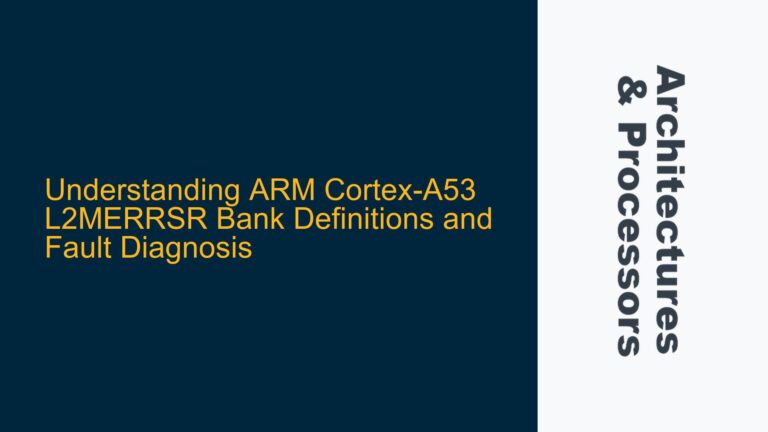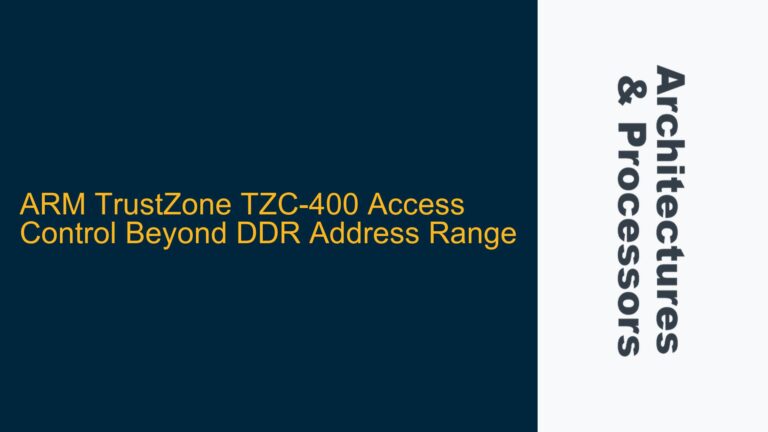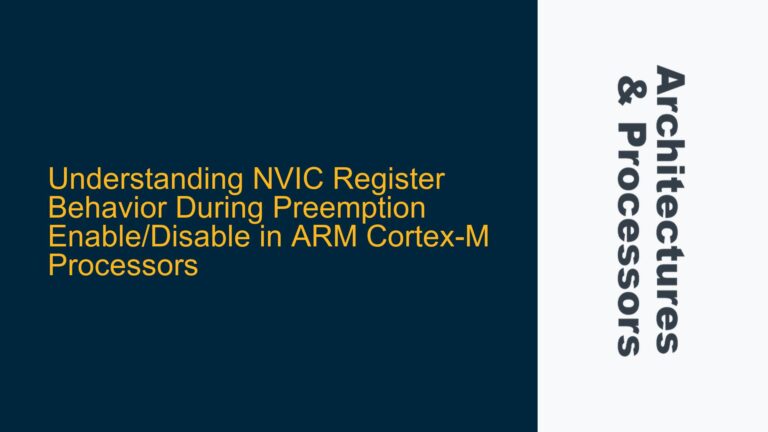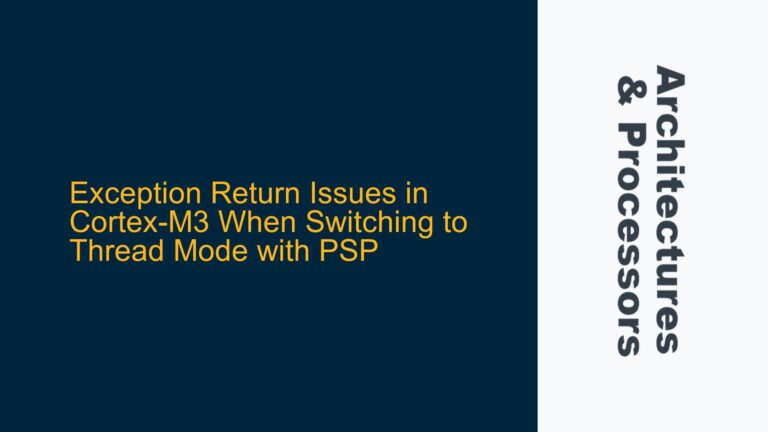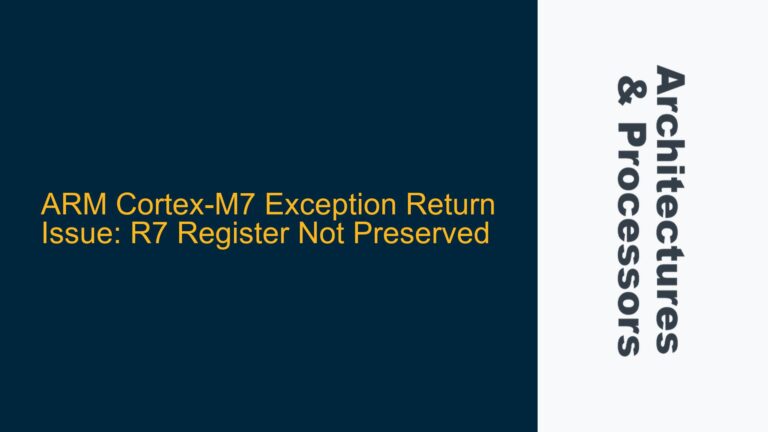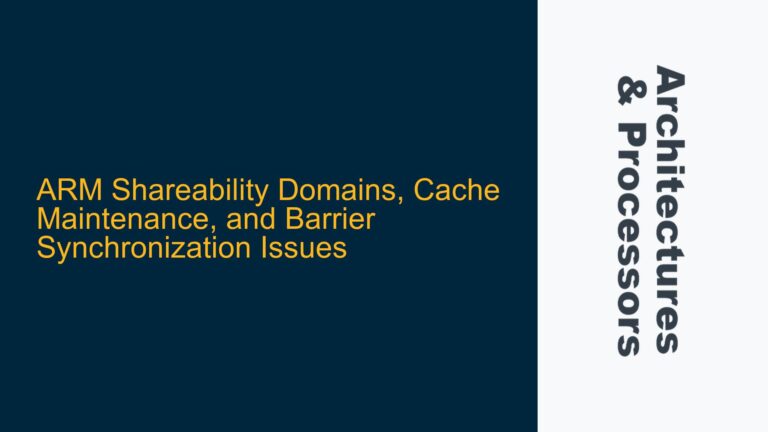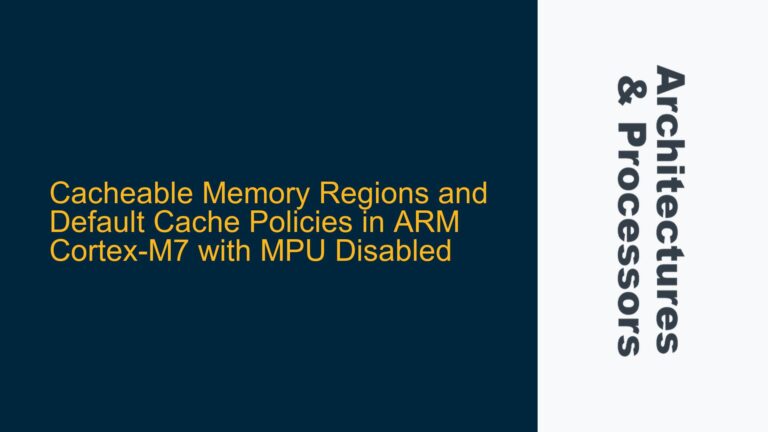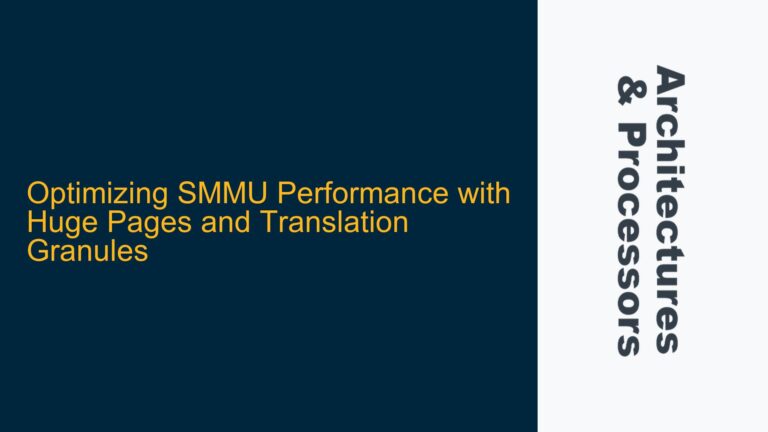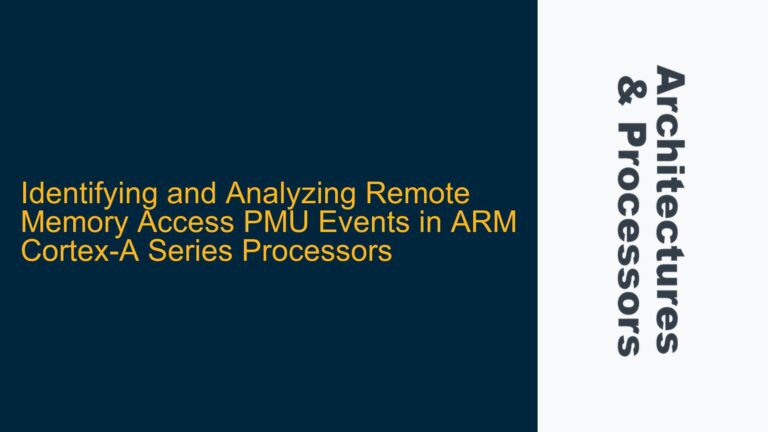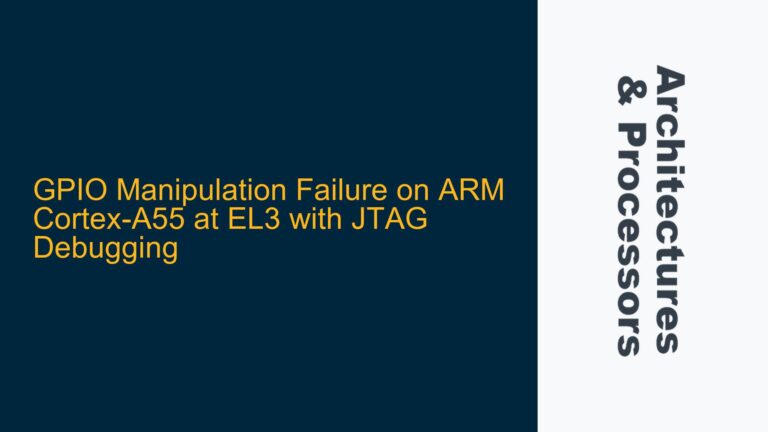ARM Cortex-A53 L2MERRSR Bank Definitions and Fault Diagnosis
ARM Cortex-A53 L2 Cache Organization and L2MERRSR_EL1 Error Parsing The ARM Cortex-A53 processor features a shared L2 cache that plays a critical role in system performance and reliability. The L2 Memory Error Syndrome Register (L2MERRSR_EL1) is a key diagnostic tool for identifying and analyzing cache-related faults. In the context of a Zynq UltraScale+ (ZU+) system,…
